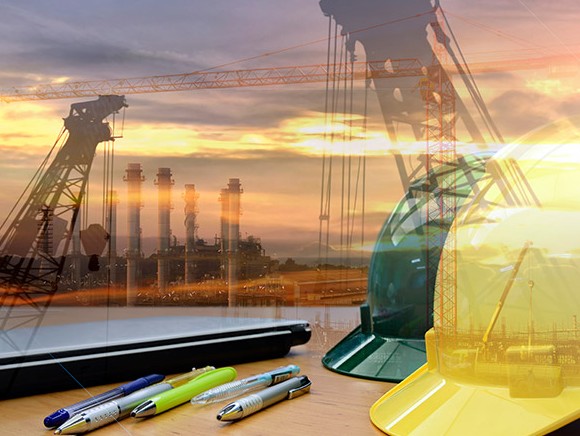
Whoever has plans for new construction or renovation in 2018 will be dealing with major themes. Energy saving, sustainable materials, increasing efficiency, food safety. What do building experts and food sector suppliers have to offer in terms of innovations? What trends and developments do they see?
Office buildings, stores and homes appear to be major environmental polluters; together, they produce more CO2 emissions than traffic or the industry. Those CO2 emissions need to be reduced; on 17 April last, the European Parliament agreed to the climate law that determines the efforts for various sectors, including construction, agriculture and transport. In the Netherlands, emissions from these sectors needs to be reduced by 36% compared to 2005.
New offices and other utility buildings must at least adhere to the Building Decree. But things can be much more sustainable than those requirements stipulate; with efficient heating installations, not discharging rainwater into the sewer, or by using sustainable materials. New utility buildings, if they are ‘very sustainable and exceptionally energy-efficient’, are eligible for all kinds of subsidy schemes. Such as a Green Declaration, which can be used to ‘green fund’ a certain amount per square metre of gross floor area. A BREEAM-NL certificate can also be used to gain significant tax benefits as a building owner for your investment and be eligible for subsidies. BREEAM has been used to assess the sustainability performance of buildings in terms of nine different sustainability categories since 2010. Doing nothing is not an option.
Hans van den Hoorn from RBK (design/consultancy firm for building and installations, and supplier of automation): “In 2020, new BENG requirements (for almost energy-neutral buildings) will be replacing the current energy performance requirements. Lowering the energy need, reducing the primary fossil energy consumption for things like heating, cooling and lighting, and applying renewable energy are key concepts in the BENG”.
“Products with the highest insulation value always come first”, says Gerard Scherff from K.I.M.-Nederland, specialist in insulation system construction. “We do not blindly focus on the thickness of the insulation material; it is really about the performance of the product. And we are quite progressive in this. All of our efforts are aimed at maintaining the highest quality level. We design, build and install, but we do more than that; we work together closely with our regular suppliers. That is essential for innovation.” One of the innovations K.I.M. is currently marketing is the QuadCore insulation technology. “This is a great innovation in the field of rigid foam insulation material”, Gerard explains. “The benefits are a superior thermal efficiency, the best fire safety and maximum durability scores. And that durability is certainly shown by the warranty period; we offer a 40-year thermal and structural warranty.”
Hans van den Hoorn: “In order to save on energy consumption, we try to have our projects in the building and the separate building systems work together in an integrated way as much as possible. We realise projects that are BREEAM certified, with special attention to energy conservation and energy saving. We also offer automation solutions, whereby production and installations can be fully controlled and managed. The new BENG requirements suit our integrated project approach well, and we are already applying them in all of our projects. We implemented a recent project without central heating; meaning that no gas connection was made for it, either. The floor heating in the offices works with residual heat from the cold installation, and this residual heat is also used to heat up cleaning water. To store as much heat as possible, we even made use of the water in the sprinkler tank. Furthermore, a substantial part of the electrical consumption is generated using solar panels. The FOPRO® control system from RBK ensures the most energy-efficient control of the cold installation as possible. With previously realised installations, this has resulted in energy savings of up to 20% compared to the original consumption”.
“The major advantages of new construction are, of course, the previously mentioned possibilities for energy saving”, Herman Bessels, architect BNA at Bessels architekten & ingenieurs, continues. “With a new construction project, it is easier to include the latest innovations than with existing structures. Today, all maintenance provisions are indoors, above the sanitary ceiling, which means installations can be substantially cheaper: on top of a roof, they had to be resistant to wind and weather. Not anymore. Replacing air filters has also become much easier if they are situated in a gap rather than on top of a roof. However, you do need the space to make that gap 3 metres; that can be a good reason for new construction.”
Even so, many food companies choose renovation over new construction. A company grows, meaning there is some renovation and some new construction. Perhaps it even expands to the adjacent lot. Full new construction is often too costly. Which is logical if you consider that a food factory is little more than a raincoat, a casing for the highly expensive process installations. Good luck moving all of those. What also plays a role in choosing to expand rather than move is that food companies have to meet a large number of very specific environmental requirements. They have all permits at their existing location, and it is not easy to obtain them once again for another site. Moreover; how do you hold onto your staff if you move to the other side of the country? All this makes new construction a difficult story. Companies who do move often do so because they are forced to, for instance due to a reallocation of the land on which they are situated. This usually means there is an external fund to help finance part of the new construction and move.”
Herman Bessels and Hans van den Hoorn have seen that the choice for new construction is being taken more and more in recent years. Hans: “In the crisis years, companies had to consolidate, the emphasis was on maintenance and repair of existing buildings, and on merging activities or expanding them within the existing building. Now that companies are turning a profit again, upscaling and expansion of activities are on the rise, and new construction is back on the table. For about three years now, we have seen our order book for new construction in the Netherlands grow again”. They believe this also has something to do with another trend: Hans: “Many of our clients are aware of the call for more sustainable business by customers and consumers. This is clearly reflected in the CSR annual reports. The wish to modernise and realise the necessary quality improvement in the building and processes also play a role. The food industry wants solutions for more efficiency, lowering energy consumption and better climate control.”
Gerard, KIM: “Building in an integral way and thinking with the client in the preliminary phase is becoming ever more important, whether it concerns new construction or renovation. Especially if you want to deliver a food-safe building. Digitisation is playing an increasingly large role in many processes; including in construction. With the help of the BIM model, we now build a building fully virtually. Thanks to this 3D model, we can resolve any bottlenecks in the design even before starting construction. That saves a lot of time and money, and construction has to be faster and faster. It is great that technologies like these continue to develop. It is certainly not boring!”.
Hans van den Hoorn adds: “A food-safe building depends on controlling the production and cleaning processes, the goods flow and the routing of the staff, as well as the building management and maintenance. This requires a good logistic analysis in advance, as well as a logistical plan in which the routing of staff, products, tools, auxiliary materials, waste, etc. is recorded as fully as possible. What should follow is a design and building process with attention to engineering and choosing the right systems and installations, and the right design and finish for the building”.

Herman Bessels: “What has really changed is that building has turned more and more into assembling. It is a movement we have seen in the automotive industry and shipbuilding for decades, and now also in non-residential construction. The Internet is playing an increasingly large role: that is where you look for who can supply the best products at an attractive price in the short term”. This different method also changes the way of financing. “Nobody has their own trucks, machines and equipment anymore; everything is rented or leased. That is trend you can also apply to buildings. In the past, a company would finance the new construction themselves. That is happening less and less. The method of financing has a major impact on the construction plan and process. The question is turning toward: what makes a building interesting for an investor? The answer: if it has a maximum residual value and a multifunctional use as soon as the first user has left.”
“There is not much you can do with an old food factory, it is difficult to find a new purpose for it. The floors are often sloped due to drains, and there are odours you can never get rid of. The value of such a factory is the land value minus the demolition and remediation costs. Which is precisely why many old factories remain. Nobody wants to take the loss. Nobody wants to write off.
We see the same thing in store buildings within the periphery of inner cities. Nobody wants to admit that their investment and/or pension has evaporated, so they stay.
These days, we design and build a food factory in such a way that parts can be separated from one other. For example, when the food company leaves the building, the warehouse can be rented to a distributor, and the offices to a different entrepreneur. Therefore, when designing a factory, the starting point must be multifunctionality. It does not cost more, it is just a way of thinking. Look at how Euroma Zwolle has been set up; by thinking modularly, you are able to realise a building rapidly. And with the same method, Ameco Apeldoorn was operational within 13 months after the first talk.”
Source: Beeld 3D: ©adike/Shutterstock.com, Beeld met helm: ©Phonix_a Pk.sarote/Shutterstock.com;